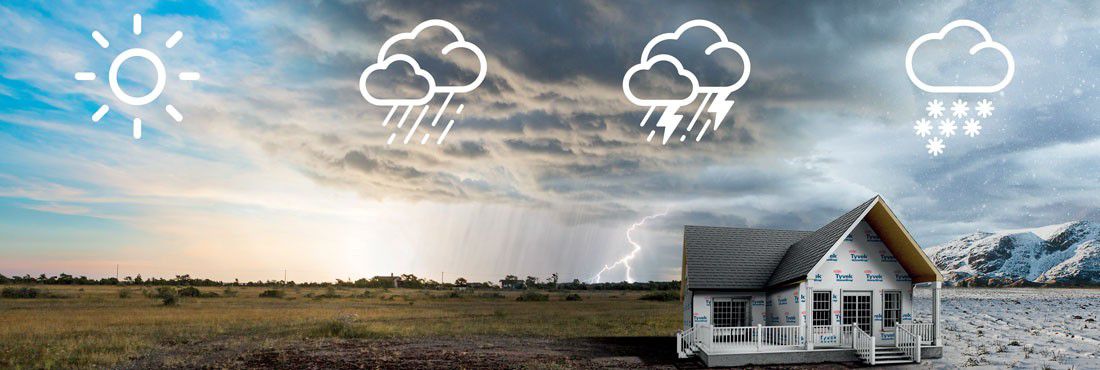The Difference Is Tyvek®
Article

Tyvek® HomeWrap® - Experience the Differenece
When it comes to choosing a house wrap, you have more options than ever.
DuPont™ Tyvek® HomeWrap® - the original house wrap - was introduced in 1980. Since then, it’s been used to protect more than a million homes and has been named the #1 house wrap in Builder magazine’s annual brand survey for 19 years in a row.
Meanwhile, an assortment of competing products and technologies have entered the market. Many of these products share one thing in common, they claim to be “better than” or “just like” DuPont™ Tyvek® but that’s just not true. Visit www.difference.tyvek.com and you will discover the proven differences of Tyvek® for building wraps.

Choosing the Right Weather Barrier
Are You Smarter Than Water?
Installation of the ZIP System® sheathing requires 52 fasteners per panel. Overdriven fasteners are common. The manufacturer claims that’s not a problem, but we consider each overdriven fastener an opportunity for water to enter the wall.
The primary purpose of a house wrap is to prevent air penetration and water damage in the wall assemblies of the homes you build. A good water-resistive barrier (WRB) must perform four equally important functions:
- 1. It MUST function as an air barrier to help prevent drafts.
- 2. It MUST provide bulk water resistance to help prevent water that gets behind the exterior cladding from entering into the wall cavity.
- 3. It MUST offer moderate-to-high vapor permeability to allow any water that does enter the wall cavity to evaporate.
- 4. It MUST be durable enough to withstand job-site challenges during installation.
To accomplish all of this, a product needs to provide the proper balance of air and water resistance and vapor permeability, yet also be strong enough to withstand the rigors of the construction process and perform after installation.
